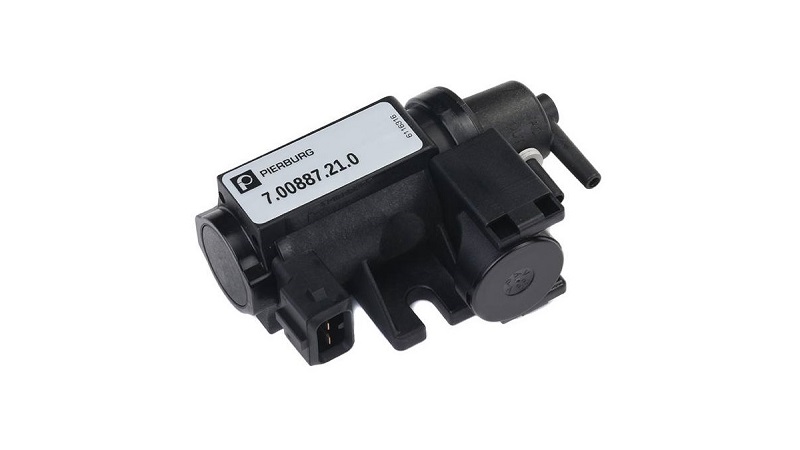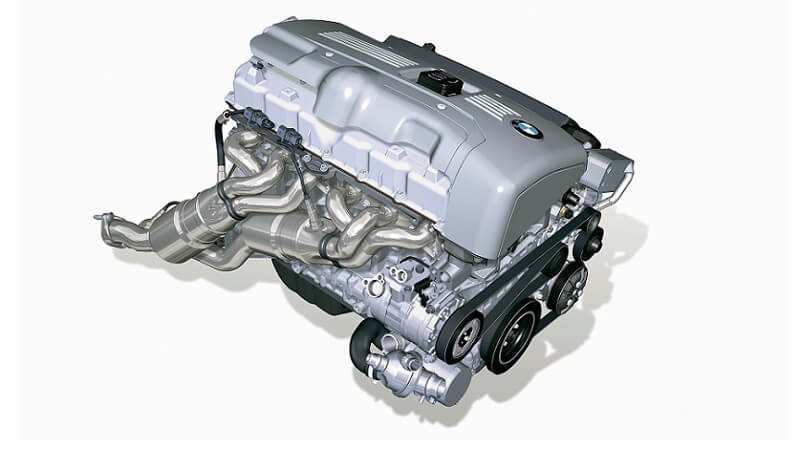Have you ever come across the enigmatic “30FF BMW code” while owning your BMW? Fear not! In this comprehensive blog post, we will demystify the 30FF BMW code and provide you with a clear understanding of its causes and solutions.
The 30FF code is a BMW specific fault related to the turbocharger system in your BMW. Turbocharger issues can significantly impact your vehicle’s performance and should not be ignored. By gaining insight into this code and its implications, you’ll be better equipped to take action and ensure your BMW continues to run at its best.
We’ll talk about the common causes of the 30FF BMW code, explore the symptoms that may arise when it is triggered, and guide you through the diagnostic process. Additionally, we will provide you with a range of solutions to rectify the issue and offer valuable tips for prevention and maintenance to keep your BMW in top-notch condition.
Understanding the 30FF BMW Code
The 30FF BMW code is a specific fault code that pertains to the turbocharger system in BMW vehicles. Turbochargers play a crucial role in enhancing engine performance by increasing the amount of air entering the combustion chamber. This, in turn, leads to improved power and torque.
When the 30FF code is triggered, it indicates a problem within the turbocharger system. Specifically, it often points to an issue with the wastegate, which is responsible for regulating the turbocharger’s boost pressure. The wastegate helps maintain optimal performance and prevents overboost or underboost situations.
Addressing the 30FF code as soon as possible is essential, as it can have a significant impact on your BMW’s performance. Ignoring the code or failing to take appropriate action may lead to reduced power, decreased fuel efficiency, and potential damage to the engine or other components.
Common Causes of the 30FF BMW Code
The 30FF BMW code can be triggered by various factors related to the turbocharger system. By understanding the common causes, you’ll be able to pinpoint the source of the issue more effectively. Here are some of the frequent culprits behind the 30FF code:
- Wastegate Failure — The wastegate is a critical component responsible for regulating the turbocharger’s boost pressure. If the wastegate fails to open or close properly, it can result in improper boost control, leading to the triggering of the 30FF code.
- Boost Leaks — Leaks in the turbocharger system, such as damaged intercooler hoses, cracked intake pipes, or faulty gaskets, can cause a drop in boost pressure. These leaks disrupt the proper functioning of the turbocharger, resulting in the 30FF code.
- Software Issues — In some cases, software glitches or programming errors can lead to the 30FF code. This can occur due to outdated software versions, incompatible tuning modifications, or faulty engine control unit (DME) programming.
- Sensor Malfunction — The turbocharger system relies on various sensors to monitor and regulate its operation. If any of these sensors, such as the boost pressure sensor or wastegate position sensor, malfunction or provide inaccurate readings, it can trigger the 30FF code.
- Mechanical Damage — Physical damage to the turbocharger, such as a cracked turbine housing or damaged compressor wheel, can disrupt the proper functioning of the turbocharger system. This can lead to abnormal boost levels and trigger the 30FF code.
By familiarizing yourself with these common causes, you can start narrowing down the potential issues contributing to the 30FF code in your BMW. In the next section, we will explore the symptoms associated with this code, helping you recognize when it’s time to address the issue.
Symptoms of a 30FF BMW Code
Recognizing the symptoms associated with the 30FF BMW code can be crucial in identifying when there is a problem with your turbocharger system. Here are some common indicators that may suggest the presence of the 30FF code:
Check Engine Light (CEL)
The most apparent sign of the 30FF code is the illumination of the check engine light on your BMW’s dashboard. When the code is triggered, the CEL serves as a warning signal that there is a fault in the turbocharger system that needs attention.
Loss of Power
A significant symptom of the 30FF code is a noticeable loss of engine power. You may experience reduced acceleration, sluggish performance, or difficulty reaching higher speeds. This can be particularly evident during acceleration or when climbing uphill.
Abnormal Noise
Pay attention to any unusual sounds coming from the engine or turbocharger area. A whistling noise, grinding sound, or excessive turbocharger noise can be indicative of a malfunctioning turbocharger, potentially related to the 30FF code.
Poor Fuel Efficiency
A fault in the turbocharger system, as indicated by the 30FF code, can result in decreased fuel efficiency. If you notice a sudden increase in fuel consumption or have to fill up more frequently, it could be a sign that your turbocharger is not operating optimally.
Reduced Boost Pressure
In some instances, the 30FF code may cause a loss or fluctuation in boost pressure. You might experience a lack of power during acceleration or notice inconsistent performance in different driving conditions.
If you observe any of these symptoms, it’s essential to address the issue promptly. Ignoring the 30FF code or its associated symptoms can lead to further damage to your BMW’s turbocharger system and potentially other engine components.
Diagnostic Process
Diagnosing the 30FF BMW code accurately requires a systematic approach to identify the underlying cause. While it’s recommended to consult a professional mechanic or use specialized diagnostic tools, here are some general steps to guide you through the diagnostic process:
Scan the Error Codes
Start by using an OBD-II scanner to retrieve the specific error codes, including the 30FF code. This will provide valuable information about the turbocharger system’s malfunction and help narrow down the potential causes.
Visual Inspection
Perform a visual inspection of the turbocharger system components, including the wastegate, intercooler hoses, intake pipes, and sensors. Look for signs of damage, loose connections, or leaks. Pay attention to any oil residue or abnormal wear and tear.
Check for Boost Leaks
Boost leaks are a common cause of the 30FF code. Inspect all the intercooler hoses, clamps, and connections for any cracks, loose fittings, or signs of air leakage. You can use a smoke machine or a soapy water solution sprayed on the suspected areas to detect potential leaks.
Test the Wastegate
Verify the proper operation of the wastegate by testing its functionality. This can involve checking for smooth movement, ensuring it opens and closes correctly, and confirming that the wastegate actuator is functioning properly.
Remember, these steps are general guidelines, and the diagnostic process may vary depending on your BMW model and the specific circumstances. If you’re unsure or unfamiliar with the process, it’s recommended to seek professional assistance to accurately diagnose the 30FF code and its underlying cause.
Solutions for the 30FF BMW Code
When faced with the 30FF BMW code, there are various solutions available to address the issue and restore your BMW’s turbocharger system to optimal performance. The appropriate solution will depend on the underlying cause of the code. Here are some common approaches to consider:
- Wastegate Repair or Replacement — If the wastegate is determined to be the culprit, repairing or replacing it may be necessary. This involves ensuring proper movement and functionality of the wastegate, or if necessary, replacing it with a new one.
- Resolving Boost Leaks — If boost leaks are causing the 30FF code, locating and repairing the leaks is essential. This may involve replacing damaged intercooler hoses, tightening loose connections, or addressing faulty gaskets. Ensuring a tight and sealed turbocharger system will help maintain proper boost pressure.
- Software Updates or Reprogramming — In some cases, the 30FF code can be resolved through software updates or reprogramming. Consulting with a BMW dealership or experienced technician can help determine if any available software updates or recalibrations are needed to rectify the issue.
- Sensor Replacement — If faulty sensors are triggering the 30FF code, replacing the affected sensors may be necessary. This could include the boost pressure sensor, wastegate position sensor, or other related sensors. Proper functionality of these sensors is crucial for accurate turbocharger system operation.
- Professional Diagnosis and Repair — It’s important to note that the 30FF code can have multiple potential causes, and accurately diagnosing the issue can be complex. Seeking professional diagnosis and repair services from a qualified BMW technician or specialized mechanic with expertise in turbocharger systems is recommended for intricate cases.
Remember, the solutions provided here are general recommendations, and the appropriate course of action may vary depending on your specific BMW model and circumstances.
Prevention and Maintenance
Preventing the occurrence of the 30FF BMW code and maintaining a healthy turbocharger system is essential for the longevity and optimal performance of your BMW. Here are some tips and maintenance practices to consider:
Regular Maintenance:
- Adhere to the manufacturer’s recommended maintenance schedule for your BMW, including oil changes, filter replacements, and inspections.
- Ensure that all maintenance tasks specific to the turbocharger system are performed, such as inspecting and cleaning the intercooler, checking for boost leaks, and verifying wastegate operation.
Quality Parts and Fluids:
- Use genuine BMW parts and recommended fluids for repairs and replacements to ensure compatibility and reliability.
- Opt for high-quality aftermarket components if needed, but ensure they meet the manufacturer’s specifications and are installed correctly.
Avoiding Excessive Stress on the Turbocharger:
- Allow the engine to warm up before driving aggressively to avoid sudden high boost demands on the turbocharger.
- Avoid unnecessary idling or prolonged periods of high RPMs, as these can strain the turbocharger system.
Monitoring and Addressing Warning Signs:
- Pay attention to any warning signs such as abnormal noises, loss of power, or unusual smoke from the exhaust.
- If you notice any symptoms indicating a potential issue with the turbocharger system, address them promptly to prevent further damage.
Regular Inspections and Checks:
- Routinely inspect the turbocharger system for visual signs of wear, loose connections, or leaks.
- Periodically check and clean the intercooler, intake system, and air filters to ensure proper airflow and prevent debris buildup.
Keep the 30FF BMW Code at Bay with Bimmers.com!
The 30FF BMW code may initially seem daunting, but with a deeper understanding of its causes and available solutions, you can confidently tackle any turbocharger-related issues that arise in your BMW. By staying proactive, adhering to maintenance practices, and promptly addressing warning signs, you can prevent the occurrence of the 30FF code and maintain a healthy and high-performing turbocharger system.
If you find that there’s an issue with your wastegate, one of the hoses, or some other part of your turbocharging system, we have your back! Here at Bimmers.com, we stock a wide range of turbocharger parts made by some of the best names in the industry. Check our catalog and find everything you need at sharp prices!







